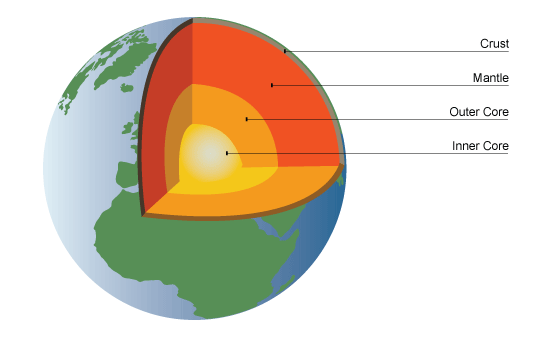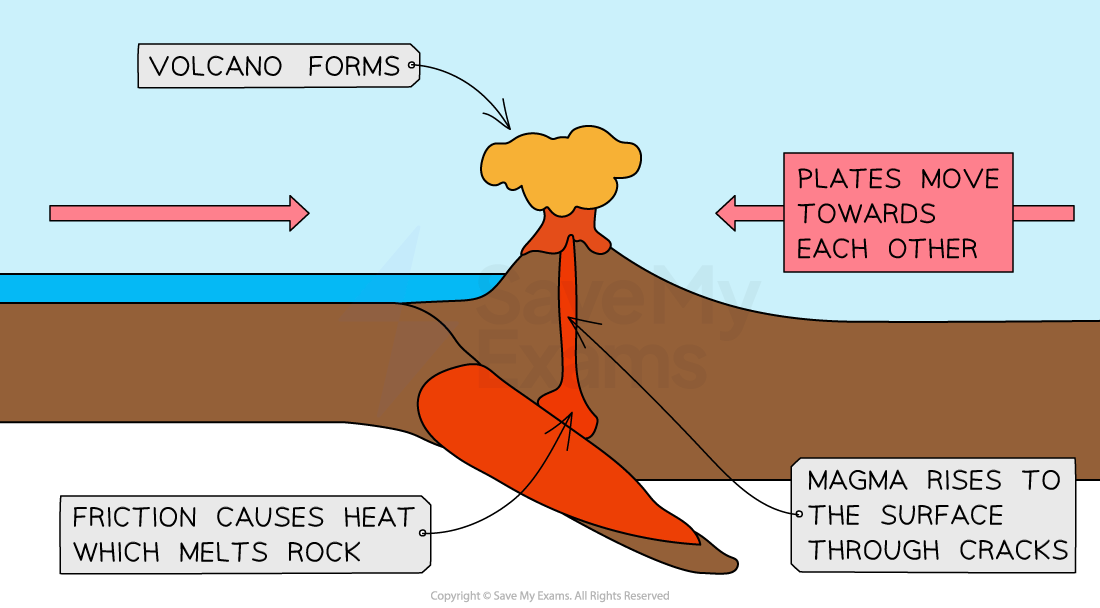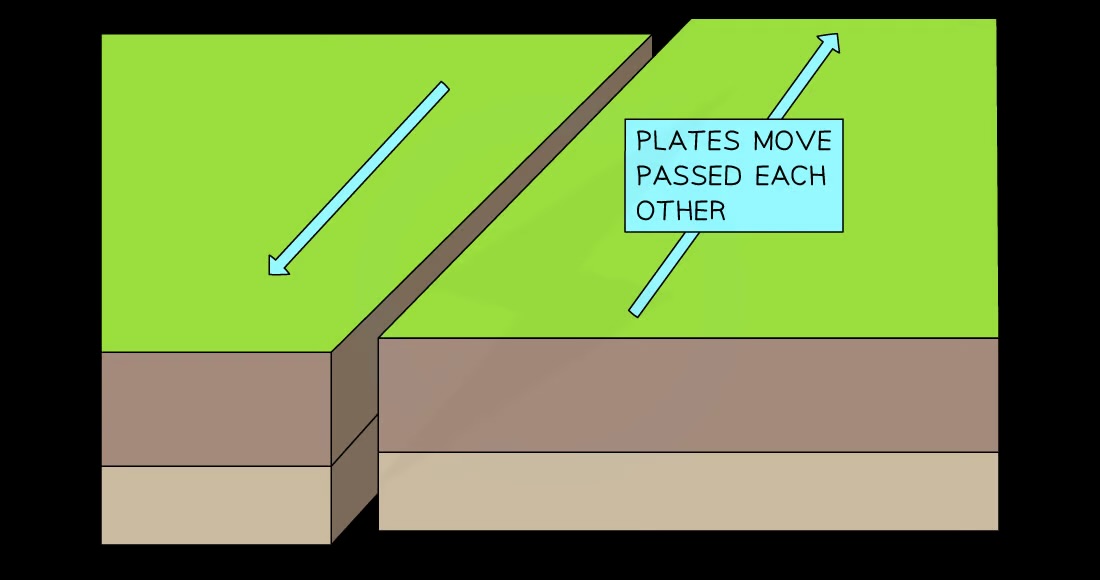natural + tectonic hazards
1/23
There's no tags or description
Looks like no tags are added yet.
Name | Mastery | Learn | Test | Matching | Spaced |
|---|
No study sessions yet.
24 Terms
What is a natural hazard?
A natural process which could cause death, injury, damage, or is a threat. It must affect humans to count as a hazard.
What are the types of natural hazard?
Geological hazards
Caused by land + tectonic processes
Examples: volcanoes, earthquakes, landslides
Meteorological hazards
Caused by weather + climate
Examples: tropical storms, climate change, extreme weather (e.g. heatwaves)
What is hazard risk?
The probability that a natural hazard will occur.
What affects hazard risk?
Vulnerability: the more people in areas exposed to natural hazards, the greater the probability they will be affected. Also, if a town is located at the base of a volcano or on a floodplain, for example.
Capacity to cope: HICs can cope better as they can afford to evacuate people, repair damage, etc
Nature of natural hazards: some hazards are less able to be predicted. Some hazards have a higher frequency. More severe hazards cause greater effects than less severe hazards.
What is the earth’s structure?
Crust: divided into tectonic plates, rocky outer layer with two types of crust, max temperature 400ºC
Continental crust is thicker (30-50km) and less dense
Oceanic crust is thinner (5-10km) and more dense
Mantle: semi-molten, 500-3000ºC
Outer core: liquid iron + nickel, 4000-6000ºC
Inner core: solid iron + nickel, 5500ºC

Why do plates move?
Convection currents. The outer core heats the lower part of the mantle, which rises to the surface. At the crust, it cools and is forced sideways then falls as it cannot penetrate the rock.
Explain a destructive palate boundary.
Two plates move towards eachother (e.g. along the west coast of South America).
Where an oceanic plate meets a continental plate, the denser oceanic plate is subducted into the mantle (slab pull theory) and destroyed.
Where two continental plates meet, the ground is folded upwards to create mountain ranges.

Explain a constructive plate boundary.
Two plates are move away from eachother (e.g. at the mid-Atlantic ridge).
Convection currents move the plates away from eachother. Magma rises from the mantle to fill the gap and cools, creating new crust.

Explain a conservative plate boundary.
Two plates move sideways past eachother at different speeds / opposite directions (e.g. along the west coast of the USA).

Where are volcanoes found?
Destructive margins: a pool of magma forms in the mantle due to the oceanic plate melting, which then rises through cracks in the crust (vents) and erupts as lava.
Constructive margins: magma rises up to fill the gap, forming a volcano
Hotspots (e.g. Hawaii): volcanoes form over parts of the mantle that are really hot
Where are earthquakes found?
Destructive margins: tension builds up when one plate gets stuck as it’s moving past the other into the mantle
Constructive margins: tension builds along cracks within the plates as they move away from each other
Conservative margins: tension builds up when plates lock together then suddenly release into an earthquake
What happens in a volcanic eruption?
Lava and gases are emitted. Some volcanoes emit ash, which can cover land, block out sun, and form pyroclastic flows.
What happens in an earthquake?
Seismic waves (vibrations) are sent out from the focus (the point in the Earth where rocks are moving) and spread out. The closer to the focus, the stronger the waves, the more damage. The epicentre is the point on the Earth’s surface right about the focus.

How are earthquakes measured?
Using the Richter scale. It measures how powerful an earthquake is (magnitude). It is logarithmic, meaning a magnitude 5 earthquake is ten times more powerful than a magnitude 4 earthquake.
What are the primary and secondary effects of a volcanic eruption?
PRIMARY
Buildings and roads destroyed by lava + pyroclastic flows
People and animals injured or killed by lava, pyroclastic flow, and falling rocks
Crops damaged
Water supplies contaminated by ash
SECONDARY
Flooding caused by hot rocks, ash and gas melting ice and snow on the volcano
Transport networks blocked or destroyed so help can’t get through
People left homeless + unemployed as businesses are destroyed
Ash makes soils more fertile
What are the immediate and long-term responses to a volcanic eruption?
IMMEDIATE
Evacuate people asap
Provide food, drink and shelter for evacuees
Treat injured people
Foreign governments may send aid workers, supplies or financial donations
LONG-TERM
Repair and rebuild or resettle people elsewhere
Repair and reconnect infrastructure (roads, rail, power lines, etc)
Improve monitoring and evacuation plans
Boost economy if possible - attract tourists to volcano
What are the primary and secondary effects of an earthquake?
PRIMARY
Buildings and bridges collapse
People are injured or killed by collapsed buildings / debris
Roads, railways, ports and airports are damaged
Electricity cables, communication networks, gas, etc are damaged
SECONDARY
Landslides / tsunamis triggered
Leaking gas ignites and starts fires
People left homeless + unemployed as businesses are destroyed
Shortage of clean water + sanitation, so disease spreads
Aid can’t get through due to blocked or damaged roads
What are the immediate and long-term responses to an earthquake?
IMMEDIATE
Rescue people trapped by collapsed buildings + treat injuries
Put out fires
Set up temporary shelters
Temporary supplies of water, food, electricity, gas, etc
Foreign governments may send aid workers, supplies or financial donations
LONG-TERM
Re-house people
Repair / rebuild damaged buildings, roads, railways and bridges
Reconnect broken electricity, water, gas and communications
Improve building regulations so less damage in future
HIC earthquake case study
Japan, March 11th 2011
9.0 magnitude with epicentre 70km offshore
1 minute warning given and lasted 6 minute
PRIMARY EFFECTS: 22000 dead, 130000 homeless, 330000 buildings destroyed, 170000 homes lost water supplies
SECONDARY EFFECTS: tsunami wave 38.9m high, $235 total cost, nuclear crisis as 9m wave flooded Fukushima power plant
IMMEDIATE RESPONSE: only 58% of people in coastal areas followed tsunami warnings and went to higher ground
LONG-TERM RESPONSE: new settlements built to accommodate 20000 left homeless, most of city being rebuilt, investigating why so many buildings collapsed
LIC earthquake case study
Haiti, January 12th 2010
7.0 magnitude with epicentre 25km away from Port-au-Prince (capital city) where 3 million live
Earthquake lasted 30-40 seconds
PRIMARY EFFECTS: 220000-300000 deaths, 300000 injured, 1.5 million people homeless, 4000 schools damaged / destroyed
SECONDARY EFFECTS: 20% of jobs lost, overcrowded tent cities and poor sanitation led to disease, $13.9 billon to rebuild, landslides, crime increased
IMMEDIATE RESPONSE: USA sent rescue teams and 10000 troops, first aid for 11000 people, mass graves to bury the dead
LONG-TERM RESPONSE: improved water supply, $1.1 billion donated but only 2% of it released due to corruption, giving seeds to households to grow their own food, free medical care
Why do people continue to live in hazardous areas?
People don’t want to leave friends / family
They’re employed in the area
Soil around volcanoes is fertile due to minerals in volcanic ash
Volcanoes are tourist attractions so people work in that industry
People are confident of their government support
How can monitoring + prediction reduce the effects of tectonic hazards?
EARTHQUAKES: Seismometers and lasers monitor earth movements, increase in radon gas levels indicates an earthquake could be likely
VOLCANOES: change in shape of volcano may signify magma building up, tiny earthquakes could indicate an eruption, increase of volcanic gases (sulphur)
How can protection reduce the effects of tectonic hazards?
EARTHQUAKES: buildings built with flexible steel beams in an X shape, buildings built with shock absorbers, automatic shut-off switches turn off gas + electricity to prevent fires
VOLCANOES:
How can preparation / planning reduce the effects of tectonic hazards?
EARTHQUAKES: people know what to do if an earthquake happens, emergency services can train + prepared for disasters to reduce number killed, emergency supplies stockpiled
VOLCANOES: evacuation routes planned by governments, areas most vulnerable are identified